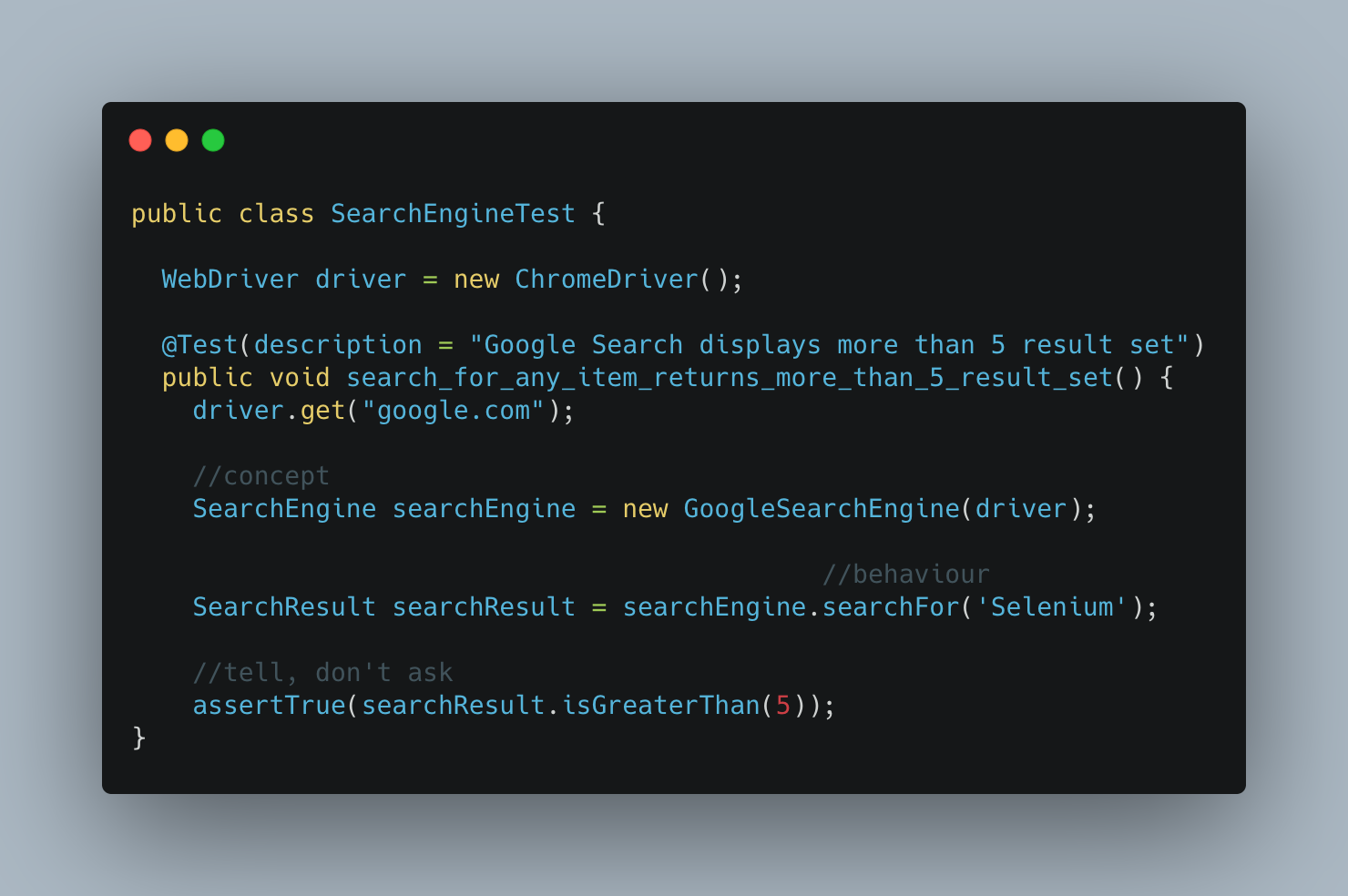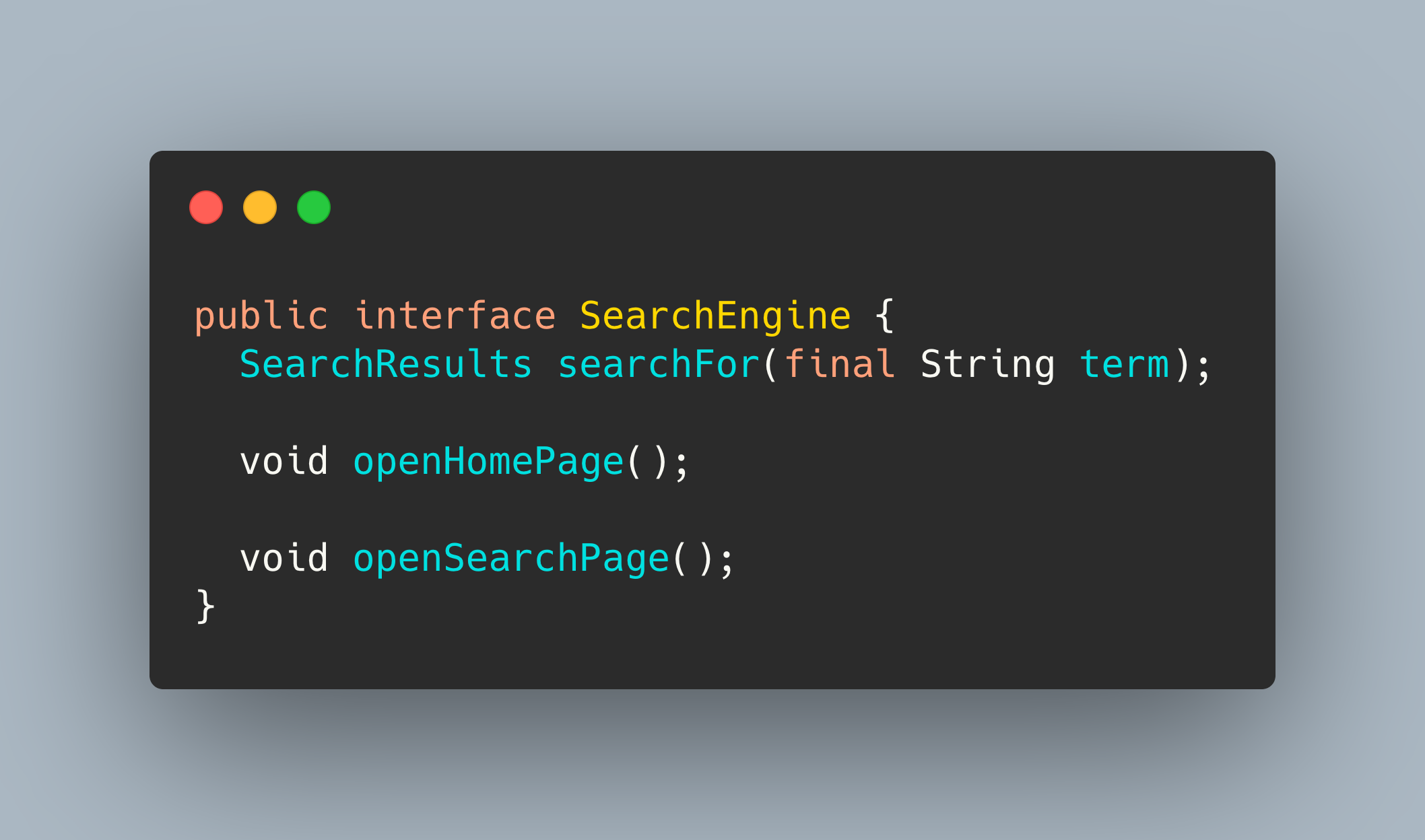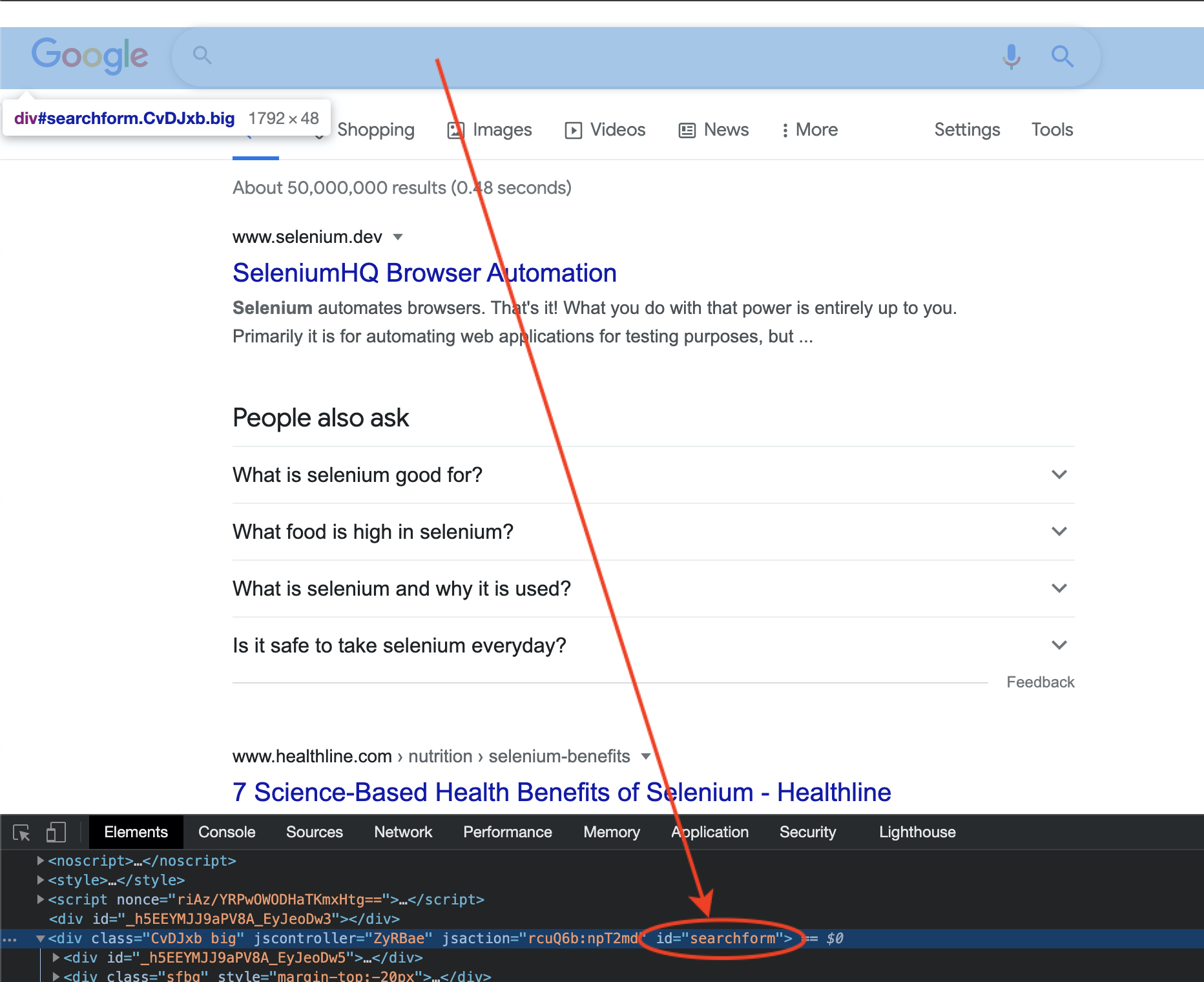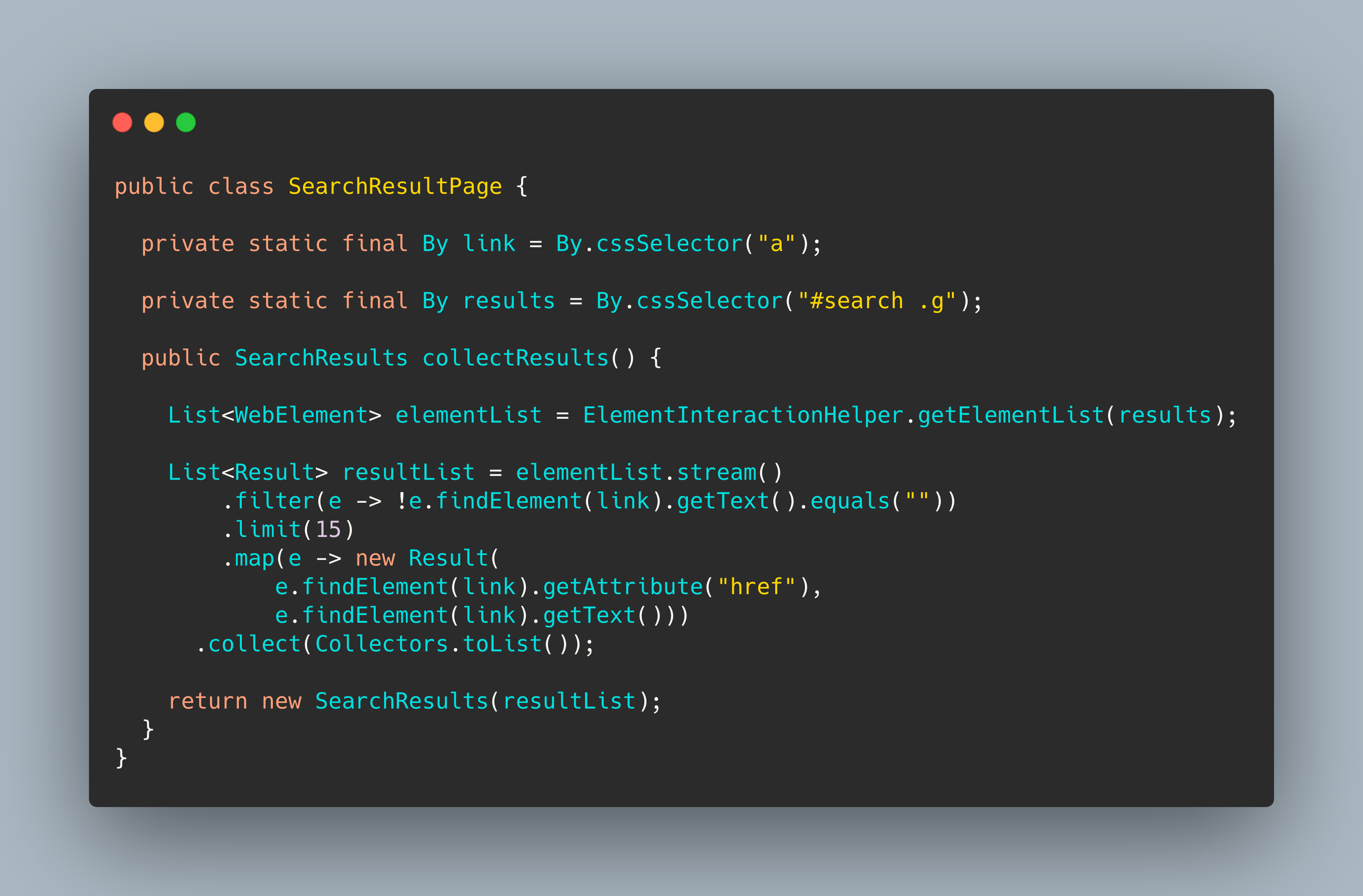
Introduction
In the last post, we applied design techniques to refactor the test class and the underlying code design.
In this final guide, we will look at how to refactor a page object in response to changes from the business.
When you finish reading, you will be able to create effective page objects for any UI interface you encounter using design principles.
Prerequisites
Before you begin this guide you’ll need the following:
- Read Part Two
Let’s do it 💪💪💪
The Current Test:
New Requirement:
- Add test to search from the results page.
There are two Test cases now.
We should write them out again so it is clear
Testcase 1: User can start search from Home page
- Be on the
Home page - Type
Selenium Javain the searchbox - click the first suggestion from auto-suggest dropdown
- Assert results are displayed on the search page.
Testcase 2: User can start search from results page
- Be on the
Search results page - Type
Selenium Javain the searchbox - click the first suggestion from auto-suggest dropdown
- Assert results are displayed on the search page.
Notice how similar this journey is to our existing test case. The only difference is one starts from the home page, the other from results page
Step 1 — Add the new test case
What has changed?
We added two new methods
openHomePage()&openSearchPage()to the search engine object, to make sure the test starts from the right page.We changed the test name, assertion and the message returned on failure.
We removed all references to WebDriver from the test class.
NOTHING ELSE! That’s right. Nothing else needed to change in the test class, because we have written a resilient class. 😉
Step 2 — Let’s update the interface with the 2 new methods
Step 3 - Let’s implement the new methods.
Step 4 - Let’s refactor the searchFor method in the GoogleSearchEngine Class.
Looking at current implementation below:
We notice the method began from the GoogleHomePage, entered SearchText via the HomePage and results is also coming from the homepage.
In a nutshell, the implementation of searchFor() couples it to the GoogleHomePage making it hard to cater for the new requirement.
What do we do?
Decouple SearchFor implementation from GoogleHomePage
Find the common element between Homepage & Result page
Go to homepage and search for #searchForm
HomePage Go to Results page and search for #searchForm
Results Page
You will notice the searchForm is common across all Google Pages. Thus, making it a candidate to extract from the Homepage and move to its own class with the search behaviours.
Let’s create a SearchForm Class
Refactor searchFor() to use the searchForm in the GoogleSearchEngine class.
Add a Search Results page to extract results into Domain class SearchResults.
This page will extract the link & linkText values from the WebElement List and populates the SearchResults domain object.
Now are back to the where we started.
The test class!
But this time, we have refactored all the framework code and the test should work perfectly.
What have we done so far?
Refactored the test class add new test case and remove framework code like
WebDriver.Refactored
GoogleSearchEngine#searchFormethod to not depend onGoogleHomePageAdded Navigation methods to the
SearchEngineInterface.Created
SearchFormcomponent to handle all search related task.Created
SearchResultPageto collect result.
Conclusion
This completes the three part Page Object series 🥳.
Now go forth and use the lessons from this series to build page objects for your projects.
Things to Note
For brevity the classes were edited to focus on the relevant details, but don’t worry you can find the complete code in my Github repo.
I am happy to answer questions you may have, reach me on any of my handles.











